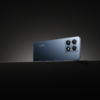With every new generation of smartphones, the distance between what we expect from our devices and what they deliver is closing. Today, MediaTek’s Dimensity 9400 is narrowing that gap even further. At the heart of the new chipset, a powerhouse combination of performance and efficiency, is a breakthrough approach to mobile AI that could redefine how we interact with our smartphones.
The Dimensity 9400 is MediaTek’s latest flagship SoC and offers an impressive array of technical innovations. It is built around a second-generation All Big Core architecture that pairs Arm’s most advanced cores with the latest in AI computing power. The Cortex-X925 core, operating at speeds over 3.6GHz, leads the charge, backed by three Cortex-X4 cores and four Cortex-A720 cores. This configuration alone results in a 35% boost in single-core performance and a 28% improvement in multi-core performance over its predecessor, the Dimensity 9300. Yet, despite these performance gains, the chipset is remarkably energy-efficient, consuming 40% less power than the previous model—a crucial advantage as smartphones continue to be central to our digital lives.
One of the Dimensity 9400’s defining features is its enhanced focus on AI, particularly on-device AI. With the 8th Generation NPU, this chipset supports more advanced machine learning and generative AI tasks directly on the device, without needing to rely on cloud computing. This shift towards edge-AI has significant implications for the future of mobile technology, allowing for more responsive, personalised experiences while reducing latency and dependence on data connectivity.
At a time where our phones are increasingly expected to act as personal assistants, photographers, and even gaming consoles, MediaTek’s focus on AI capabilities is timely. The Dimensity 9400 supports Agentic AI, a new frontier in artificial intelligence that allows for AI models to interact more dynamically with applications, anticipating user needs and adapting to individual preferences. The chipset’s performance in large language models (LLM) is another standout, offering 80% faster prompt processing while maintaining lower power consumption than its predecessor.
Joe Chen, MediaTek’s President, sees these advances as part of a broader mission. “The MediaTek Dimensity 9400 will continue furthering our mission to be the enablers of AI, supporting powerful applications that anticipate users’ needs and adapt to their preferences,” he said, underscoring the role AI will play in the company’s roadmap for future technology.
But the chip is not just for AI aficionados—it is built to please gamers, too. The 12-core Arm Immortalis-G925 GPU promises PC-level graphics and a 40% improvement in ray tracing performance. Combined with MediaTek’s HyperEngine technology, the chipset delivers a gaming experience that is smoother, more immersive, and, importantly, more energy-efficient. According to MediaTek, the chipset offers a 41% peak performance boost with up to 44% power savings compared to the Dimensity 9300.
MediaTek’s Dimensity 9400 also addresses one of the most pressing needs of today’s smartphone users: photography. With its Imagiq 1090 image processor, the chipset enables HDR video recording across the full zoom range and significantly reduces power consumption during 4K60 video capture. These features make it easier than ever for users to capture high-quality photos and videos without worrying about their battery life taking a hit.
The Dimensity 9400 comes equipped with a revamped 5G modem capable of supporting cutting-edge features like Wi-Fi 7 tri-band MLO. This level of connectivity ensures that users will not only be able to experience the fastest data speeds but will also benefit from improved signal strength and coverage, particularly in urban environments.
Additionally, the chipset supports an array of new form factors, including tri-fold smartphones, underlining MediaTek’s commitment to innovation and its ability to adapt to emerging trends in mobile technology.



